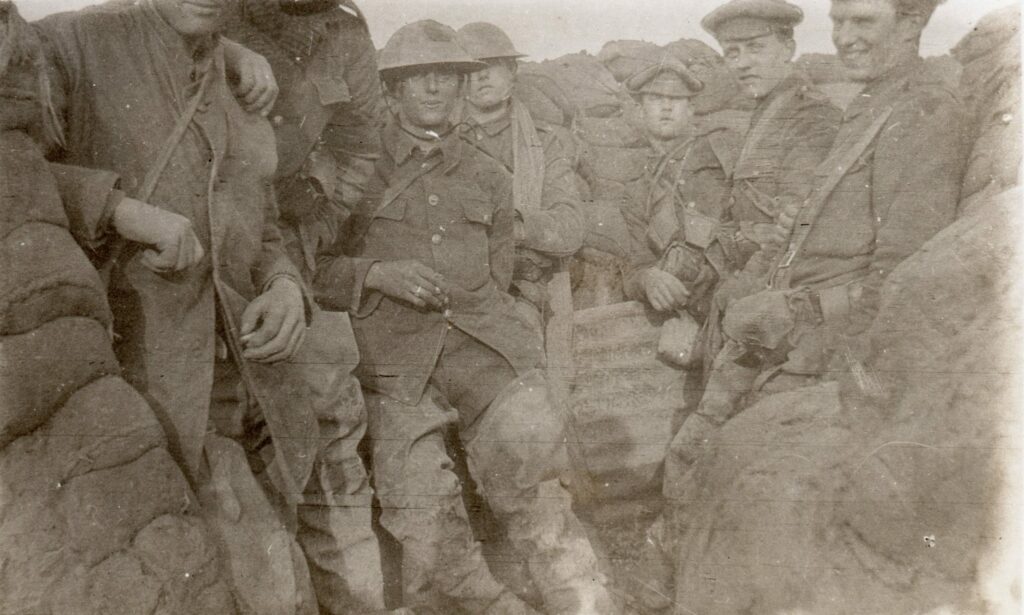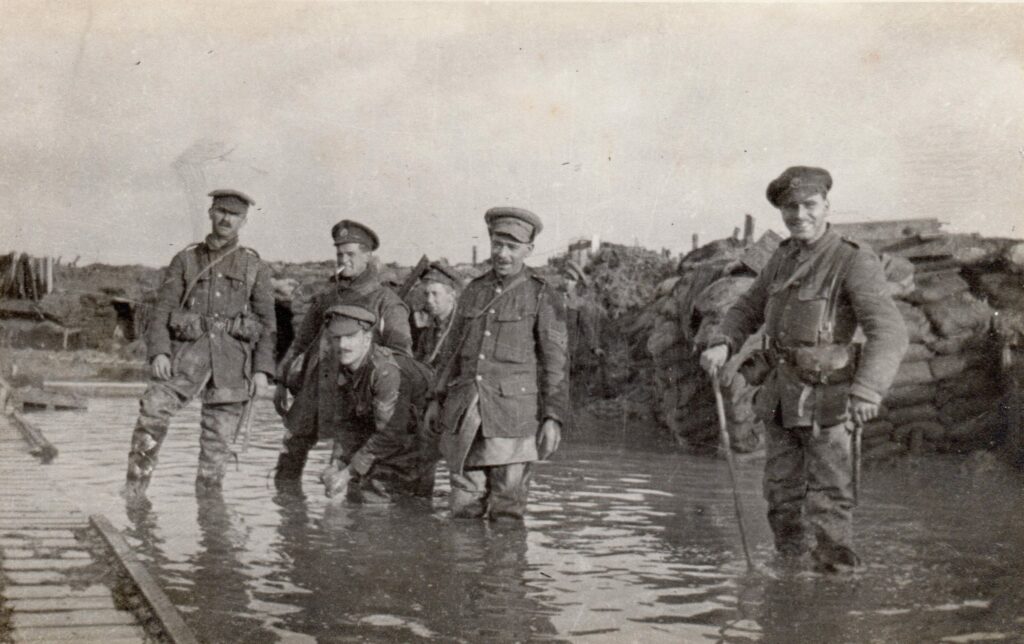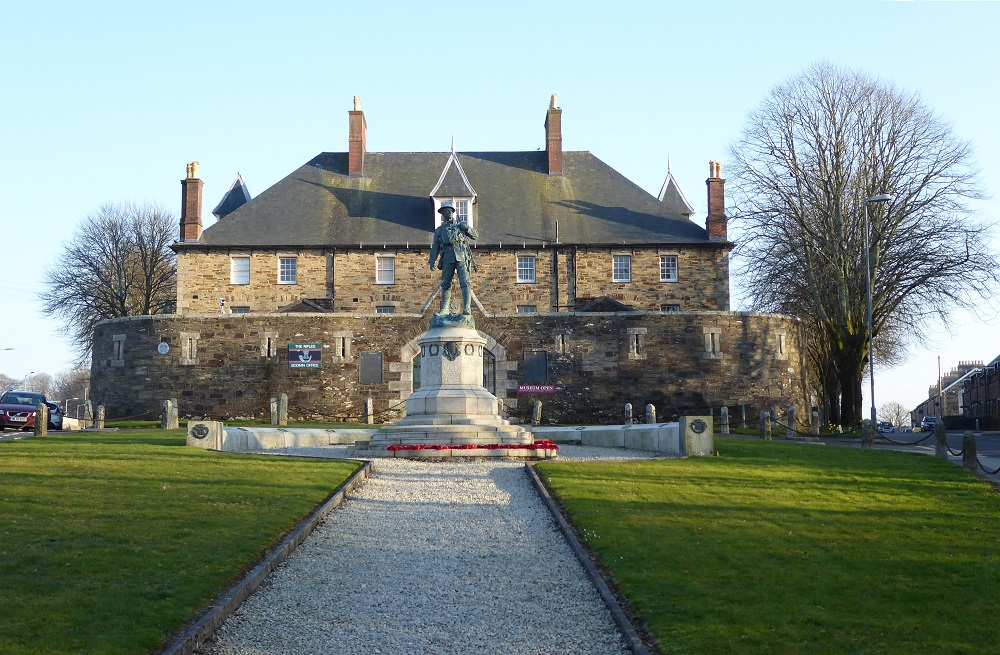During World War One, there was a widespread series of unofficial ceasefires along the Western Front around Christmas time 1914, just five months after the war had begun.
In the lead up to Christmas, German soldiers were seen to be placing lanterns on their trenches in various parts of the British sector of the Western Front, which stretched 90 miles (150 kilometres) through Belgium and northern France.
On Christmas Day wooden signs with the message ‘Merry Christmas’ could be seen on German trenches before German soldiers emerged into No Man’s Land, calling for a Truce.

Many British soldiers were initially suspicious of this. Having witnessed many examples of the Germans implementing ‘ruse de guerre’ (tricks of war) they were sceptical and did not trust the motives for the Truce.
But gradually the Truce spread. In some cases, it lasted a few hours, in others several days. Thousands of men on both sides took part with both German and British soldiers crossing trenches and venturing into no man’s land to exchange seasonal greetings, sing carols and exchange food, alcohol and tobacco.
They also took souvenirs from each other, such as buttons, cap badges and hats; swapped prisoners and took the ceasefire as an opportunity to hold burials for their dead.
As the truce was not an official one, hostilities in some areas of the front carried on as normal. For many soldiers, Christmas Day 1914 was a typical period of trench warfare, with the usual losses and despair.
Around seventy British and Commonwealth soldiers are recorded as being killed or died of wounds on the British front on 25th December 1914.

The Football Match – Did it happen?
Famously, along one section of the Western Front, there have been reports of a football match in no-mans lands, which has perhaps been over-sentimentalised.
We don’t know for sure if this happened, but we do know that activities during the break in artillery fire varied along the western front. Some took the opportunity to bury their comrades, others sang carols, exchanged souvenirs and socialised with the ‘enemy’.
Around 100,000 British and German troops were involved in this unofficial truce, with some continuing into New Year’s Day.
Henry Williamson, a 19-year-old private in the London Rifle Brigade who survived the war to become an author, sent a letter from the front to his mother.
“In my mouth,” he wrote, “is a pipe presented by the Princess Mary. In the pipe is German tobacco. Ha ha, you say, from a prisoner or found in a captured trench, Oh dear, no! From a German soldier. Yes a live German soldier from his own trench. Marvelous, isn’t it?”
While there may have been no football match, it was a truly a remarkable day, as thousands of soldiers stopped fighting and came together peacefully on the battlefield for a brief moment.
By the following Christmas, the truce was banned under threat of a court martial for any soldier on either side who dared to fraternize with the enemy.
However, for those who witnessed the Truce, it was a reminder that even in the very darkest of times, peace, hope and humanity can prevail. Even if only for the briefest of moments.

The Journey to 2030
The next few years will be both exciting and challenging. 2030 brings major changes to the way the museum is funded. Our Trustees and staff are working on plans to transform the Keep and ensure a bright and sustainable future for the museum.
We need your support to enable us to continue to educate and inspire future generations.

